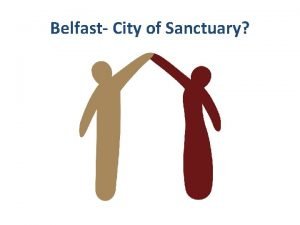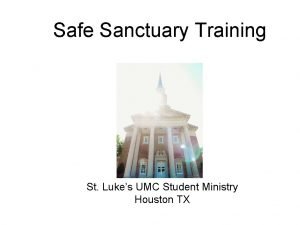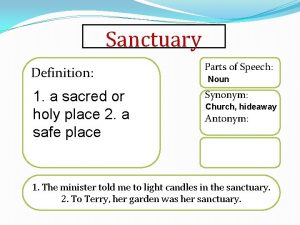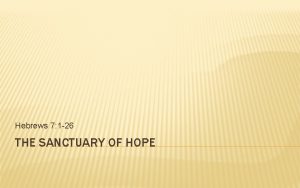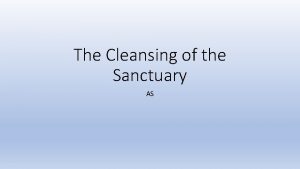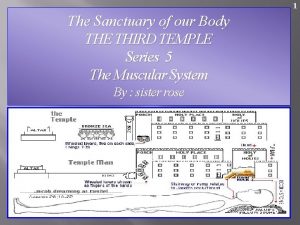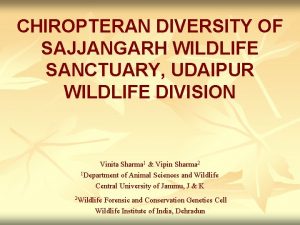Thungyai Naresuan Wildlife Sanctuary Thungyai Naresuan Wildlife Sanctuary








- Slides: 8

Thungyai Naresuan Wildlife Sanctuary คร จนทนา คำอนกล

Thungyai Naresuan Wildlife Sanctuary, the natural world heritage. Thungyai is the heart of the western forest complex, which comprises 17 forest regions, situated in western Thailand along the Tranao Sri Mountain Range, near the Mayanmar border.

It is called "western forest complex" because its boundaries extend through 5 provinces--Tak, Kampaengpet, Uthaitani, Supanburi and Kanchanaburi — and collectively protect 11. 7 million Rais (approximately 4. 4 million Acres) of forest. This is the largest and most important forest tract remaining in South East Asia with an intact ecology and a watershed that provides drinking water to thousands of Thai people.

In 1 square meter of Thungyai forest, there are more than 5, 000 species of bacteria. In 1 square kilometer, there are more than 10, 000 species of insects.

Thungyai is also home to large proportion of Thailand’s wildlife species: 153 of 258 mammal species, 400 of 930 bird species, 188 of 500 fish species, 89 of 313 reptile species, and 41 of 106 amphibian species.

The Thungyai Forest can be compared to the Amazon Rainforest of South America because it supplies oxygen to Southeast Asia and moderates flooding during the rainy season.

Sadly, only 20% of Thailand’s forest cover remains today, an astonishing figure compared to the 70% forest cover that still remained only four decades ago. If we do not recognize this tremendous loss and take immediate action, we risk not only losing Thailand’s wildlife heritage but also our own safety and that of our children.

Swidden (slash-and-burn) agriculture of hill-tribe people, irresponsible mining practices, and wildlife hunting threaten the ecology of the forest directly and indirectly. These problems are only accelerated by the construction of new roads, which threaten to fragment this fragile ecosystem, as has already happened in much of Thailand during the last 40 years of transportation network expansion.

